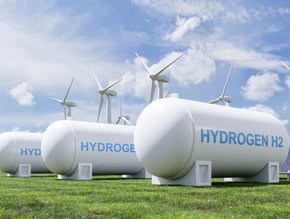How technology kept energy flowing through the lockdowns

With the UK Government’s plan for leaving lockdown underway, organisations across the utilities sector are looking forward to returning to a semblance of normality.
The start of 2021 wasn’t what most had hoped for – after the lockdowns of 2020, the new year presented the UK with 'Lockdown 3.0'. But this time there was a difference. This was the first lockdown taking place during winter months, and for energy companies in particular, cold weather typically brought a spike in demand.
However, organisations had been through this twice before – albeit in warmer weather – and therefore many were in better positions to continue to provide excellent customer service despite the tight restrictions that were in place. With the lessons that had been learned from the previous 12 months, businesses have been in a better place with much greater understanding of how to ensure their employees can keep working.
Low temperatures = high energy use
The UK rarely sees winters as cold as the recent storm in Austin, Texas where during its coldest day, the state’s average temperature was just 11.8 degrees Fahrenheit – or -11.2 degrees Celsius. But that doesn’t mean that the months of cold British weather don’t cause their own problems. Particularly this winter with the majority of the country working from home, many would be cranking the central heating up and using more electricity for lighting during the darker days and evenings.
This rise in energy usage meant that suppliers were working harder than ever to ensure that homes were kept warm. During lockdown, completing maintenance in houses, offices, or any other site is trickier than usual, as companies have had to limit the number of workers they send to a single location. But as mentioned previously, lessons have been learned, and new technologies have been integrated by many companies to ensure that they could cope with the challenging situation.
How scheduling saved time
With the country moving in and out of lockdown in 2020, there was likely to be a backlog of jobs going into 2021 that didn’t get completed last year. Prioritising scheduling will have been necessary for many companies to ensure that this latest lockdown didn’t push them further behind.
Scheduling software is being adopted by a range of utilities companies to help speed up this process. These applications can identify a backlog of jobs in one geographical area and ensure that local teams can focus on these jobs first and move between them quicker. This is more productive than, for example, completing the tasks in order they were initially due, which could force teams to retrace their steps over the course of a week traveling to different sites and likely take longer overall.
Scheduling applications also help ensure that the right workers and resources are sent to the right jobs, reducing the number of repeat visits required to complete a repair. When it comes to compliance, having detailed schedules in place is also enabling companies to better meet strict SLAs when carrying out maintenance – this preparation ensures they have everything they legally require. Similarly, newly automated audits are speeding up this process, meaning workers can complete jobs and move onto the next site quicker.
While scheduling can of course always be carried out manually, companies that have integrated software which is designed to map out their jobs saves time, reduces the margin for error and eases the pressure on teams. Crucially, this has meant that customers haven’t been left waiting for long periods of time during the latest lockdown for essential maintenance to be carried out.
Using video to spread the workload
Another solution that has been making a positive impact on customer experience during lockdown is the increasing adoption of video-based remote assistance.
In the ‘new normal’ where limiting face-to-face contact is a priority, any technology that can reduce the number of people visiting multiple locations, and the amount of time they need to spend there, is beneficial. Video-based remote assistance is enabling gas and electricity maintenance workers to complete their jobs with less risk to themselves and others – be it workers from other organisations on-site, such as Highway Maintenance, or members of the local community.
A smaller team can attend a job, and should they require advice from a more experienced team member, they can use the video livestream to show a supervisor the situation they’re dealing with and complete the job themselves under guidance. This reduces the number of workers that need to attend a site at one time, thereby helping the business to deploy resources more widely, and maximising labour utilisation when potentially dealing with a reduced workforce during the most recent lockdown. The supervisors working remotely can assist multiple maintenance workers in one day without travelling between locations, helping to reduce any potential spread of asymptomatic illness.
What the future holds
While these technologies have been on the rise recently due to the restrictions of COVID-19, according to Gartner, the next few years will see field service management tools continue to transform the mobile worker industry.
Last year, the analyst firm predicted that by 2025, algorithms and bots will schedule over two-thirds of field service work for field service providers dependent on automated schedule optimisation, up from less than 25% in 2019. In the same time period, we will see over 50% of field service management deployments include mobile augmented-reality collaboration and knowledge-sharing tools, up from less than 10% in 2019.
As far as 2021 is concerned, solutions such as these will continue to help energy – and other utilities – companies supply all customers with a consistent service regardless of the seasons.
The latest lockdown may have been the most challenging as the stakes were higher during winter, but rapidly developing technology innovations combined with the government’s lockdown exit strategy mean that it shouldn’t be long before life returns to a semblance of normal. And with it, utilities companies will have the technology in place to boost efficiency and productivity beyond what we’ve seen before.
Marc Greggains is Director of New Business Commercial Sales at TotalMobile






